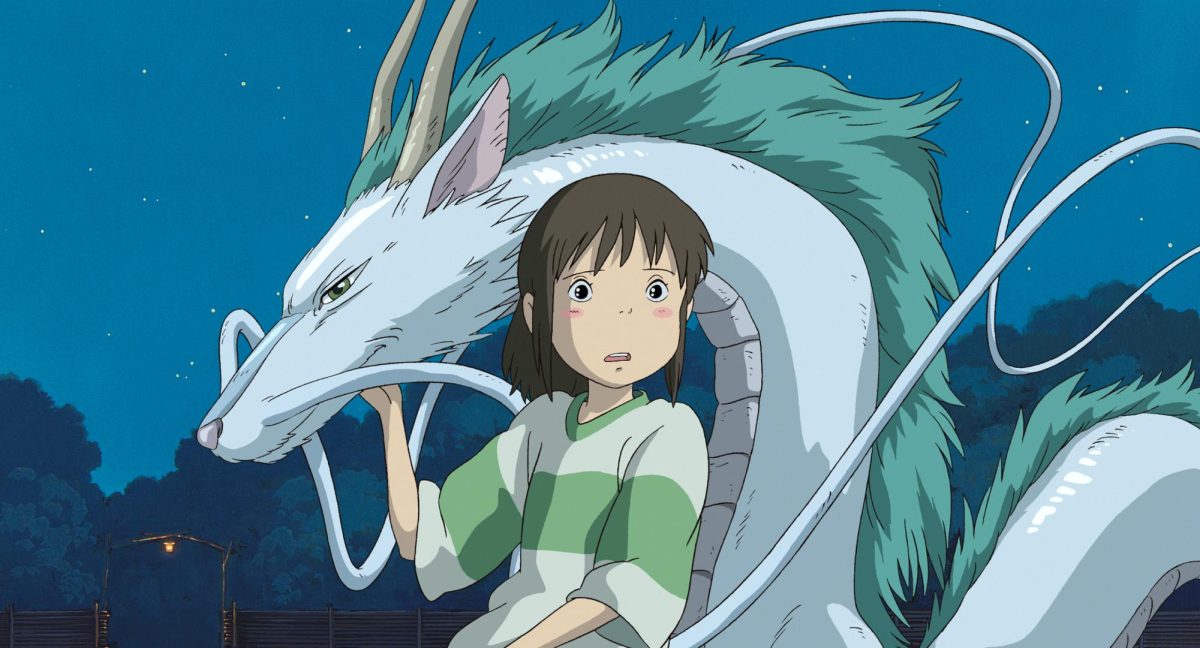The essence of childhood boils down to wonder, awe and imagination. We all have memories of imagining new worlds, separate from the mundane. Many films attempt to reproduce this feeling, this nostalgic journey through childhood, with varying degrees of success. But Hayao Miyazaki paints these experiences flawlessly.
Miyazaki is no stranger to creating coming-of-age stories. He can craft narratives that mirror childhood experiences and transform the ordinary into the fantastical. These magical elements are a Miyazaki signature, with breathtaking originality and innovative worlds that set the tone of each of his films.
This weekend, Studio Ghibli Fest kicked off by screening “Spirited Away,” one of Ghibli’s most well-known films.
“Spirited Away,” at its core, is a coming-of-age story. On their way to their new house, Chihiro and her family stumble upon an entrance to the spirit world. After Chihiro’s parents turn into pigs, she must get a job under the witch Yubaba to save her parents and return to the human world.
Miyazaki’s Artistic Brilliance
Studio Ghibli’s legacy is built upon its unique art and animation. Breathtaking, impressionistic backgrounds meld seamlessly with traditional hand-drawn animation. The scope of Miyazaki’s world is breathtaking. The meticulous detail, from the magnificent architecture to the waters surrounding the spirit world complements Miyazaki’s vision and Ghibli’s artistry perfectly.
Miyazaki has a way of portraying characters as multi-faceted. He avoids clear-cut good versus evil characters as he believes simplistic portrayals don’t reflect reality. He believes that we must see the good in evil and the evil in good. Each character is unique, drawing inspiration from Japanese folklore yet feeling fully original.
Kamaji and Lin provide comic relief and solace for Chihiro, their voice acting and dialogue fill the film with warmth. Yubaba, initially perceived as a villain, is actually nothing more than a woman determined to run her bathhouse. No Face symbolizes how people become products of their environment. When he is with Chihiro, he is peaceful and kind, but in the bathhouse, he becomes greedy as a reflection of the rampant consumerism.
Miyazaki captures Chihiro’s soul with unflinching realism. Chihiro may come across as “bratty” or “immature,” but we must remember that she is only 10 years old. These characteristics should not be seen as flaws. Rather, they are simply reflections of reality. As Chihiro faces hardship, we witness her bravery and determination to save her parents. This vulnerability makes the audience empathetic towards her. She is no longer a drawing, but a reflection of ourselves.
Joe Hisaishi’s Score
The score, composed by Miyazaki’s long-time collaborator Joe Hisaishi, is nothing less than wonderful. Hisaishi’s genius lies in composing music that breathes life into the film, each note perfectly complementing the narrative. The music stirs emotions and pushes the story forward.
“It’s Good to be Alive”
“Spirited Away” stands as Miyazaki’s long-time magnum opus. It is undeniably Miyazaki’s most heartfelt creation after his most recent film “The Boy and the Heron.” It is a film that evokes a powerful sense of vulnerability, leaving the audience in awe of the sheer brilliance poured into its creation. “Spirited Away” is a masterpiece, with its minor flaws easily overshadowed by its grandeur. The film’s true magic lies in its ability to elicit nostalgia, not just for our own childhood experiences, but for the inherent curiosity and adventurous spirit that defines childhood itself. Miyazaki said, “I would like to make a film to tell children it’s good to be alive.” And I think he does just that.



